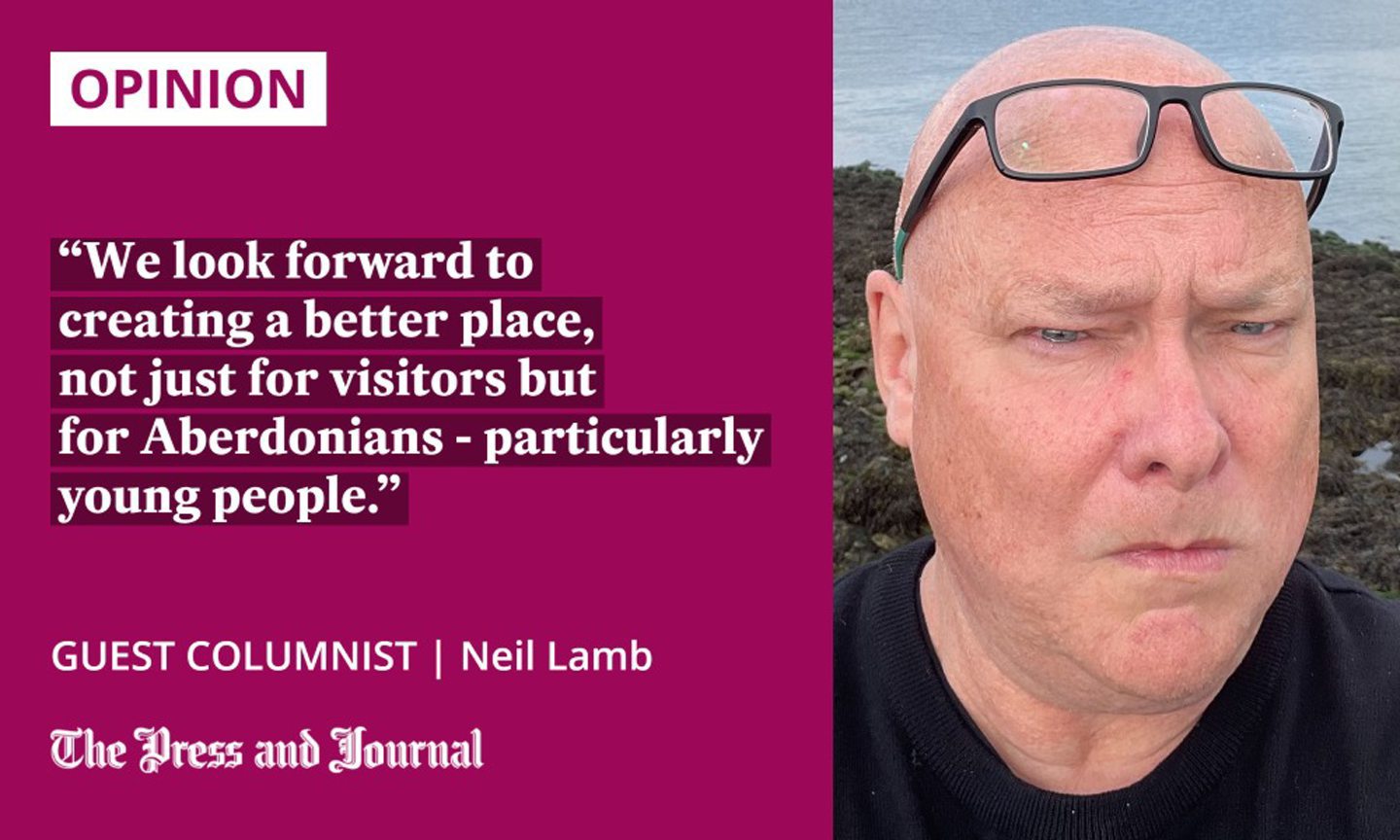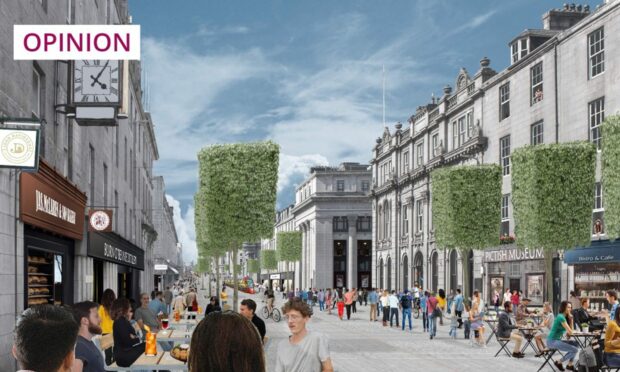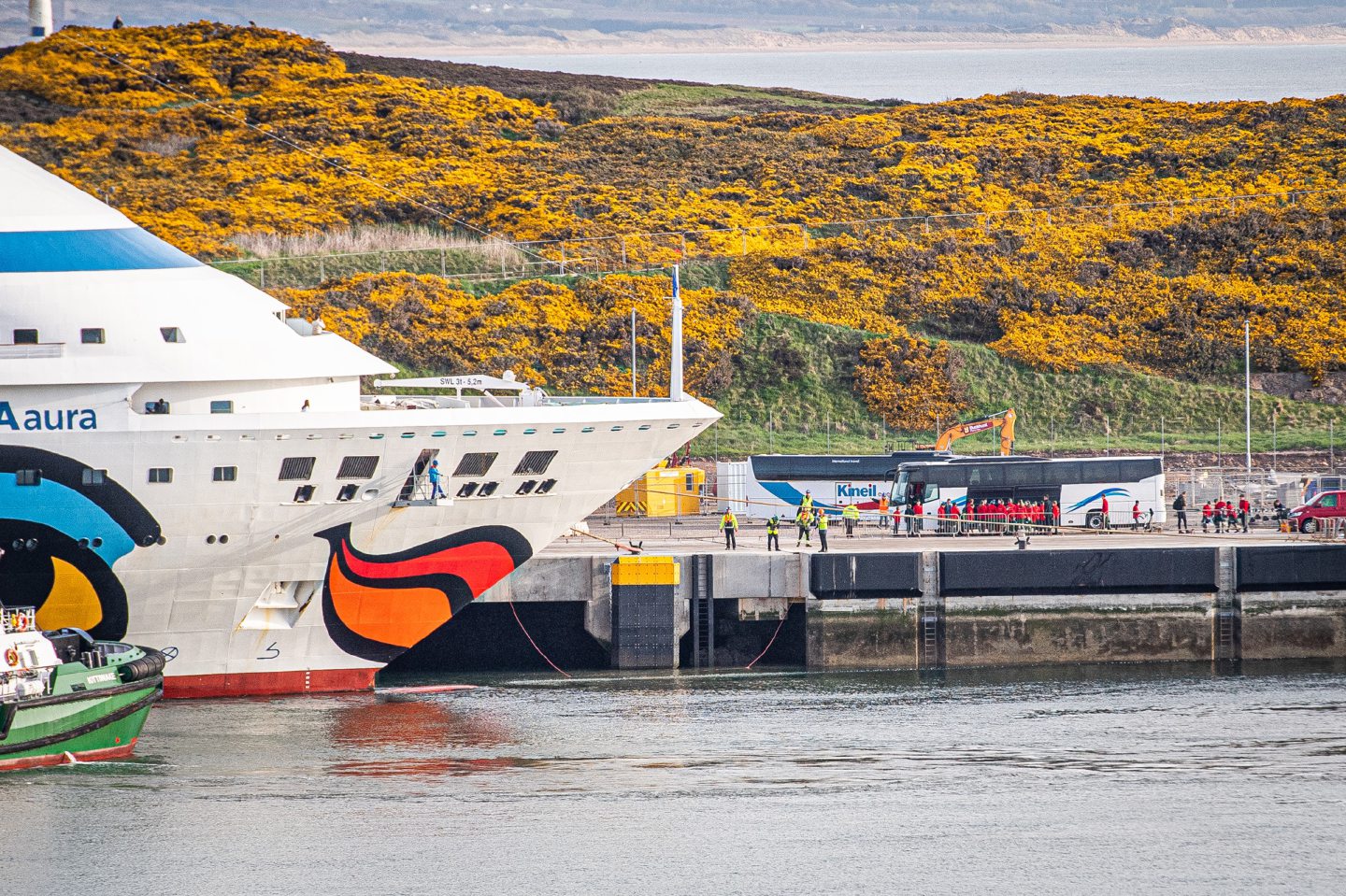It has been over 200 years since Aberdeen’s city fathers conceived of a radical, new, neoclassical street, driving westwards from the medieval heartland across a series of bridges to a “new town” on the other side of the Denburn Valley.
The conception resulted in the near one-mile-long Union Street, which is the city’s most famous space, graced with some splendid examples of granite neoclassical architecture, designed by some of our most famous architects.
The cultural importance is abound, rooted in the very psyche of the spot. It’s the place where we meet. It’s the place where we laughed or cried. It even has a board game named after it, Walkin’ the Mat, which refers to the past practice of promenading along the street on a Sunday evening, hoping to meet that someone special.
As we approach the 60th anniversary of the discovery of oil in the North Sea, a relative period of prosperity and stability is coming to an end, heralded by changes in shopping practice, health and climate change. A general feeling of decline engendered by empty shops, empty upper floors, plants growing from rooftops, pollution, rubbish and even the wrong sort of shops now occupying the street has brought about a manifesto for change.
Aberdeen residents have been asked to engage with the Our Union Street campaign, to make suggestions about how to improve the Aberdeen’s Granite Mile. Students at the Scott Sutherland School of Architecture and Built Environment at Robert Gordon University are also undertaking a project to imagine what Aberdeen could be in the future, and it includes a new vision for “a people centred city centre”.

Aberdeen has some wonderful assets and, in its city centre, Union Street must be seen as an asset. The beautiful heritage of the material and its architecture distinguish it, but perhaps we have taken it for granted.
We need to clean Union Street up, respect the heritage, and protect it. We need to prioritise the right type of businesses (low rents to encourage the best), cafes and office spaces so people can live, work and play in the city centre, removing the necessity to have every diesel-powered bus travel within it.
We need to remove all the intrusive signage and generic street furniture. We are also suggesting a new linear tram that runs along the length of the street, connecting to bus hubs located elsewhere. Giving back the space and priority to the people.
We propose that the very surface of Union Street is reimagined as a new, designed (in collaboration with leading architects and artists) interactive granite surface – contemporary and imaginative to show off the quality of the magnificent material that is the city’s very bedrock. We propose that the new surface heralds a revival in the city’s granite industry and, by using new techniques, establishes new skills and practice.
Make Union Street a must-visit destination
With the arrival of the first tourist cruise ship recently, the prospect of an increase in tourism bodes well for the local economy. We propose that Union Street is the place of destination and orientation for tourists. Shops, cafes, restaurants, and experience centres can all be part of a place that can truly celebrate the wealth and diversity of food, drink and produce in the north-east.
All this points to an imagined future. Above all, we hope that a collective plan is created for a long-term future for one of Aberdeen’s best loved places.
You don’t need to look too far to learn from other cities that have taken what they have and made it better. The “feel-good factor” results, and we look forward to creating a better place, not just for visitors but for Aberdonians – particularly young people, for it is their future for which we are planning, as well as our own.
Across Scotland, we need to invest in our city centres, using the right type of ideas for a truly sustainable, long-term future – one we can look forward to with conviction, as our city forebears did some 200 years ago.
Neil Lamb is a principal lecturer from the Scott Sutherland School of Architecture and Built Environment

